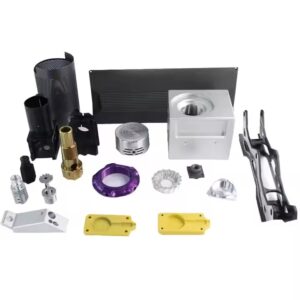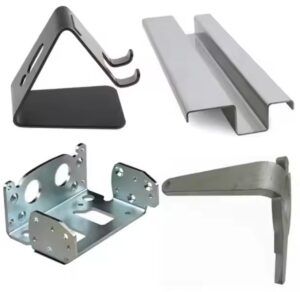As a metal fabricator, choosing the right welding process can make all the difference in the quality, strength, and overall success of your projects. With so many welding techniques out there, it can be overwhelming to figure out which one is best for your specific needs. Let’s break it down and explore how to select the right welding process based on different materials and applications.
Understanding Welding Processes
The most common welding processes used in metal fabrication include:
- Shielded Metal Arc Welding (SMAW): Also known as stick welding, this is a versatile and affordable option.
- Gas Metal Arc Welding (GMAW): Also called MIG welding, this semi-automatic process is known for its speed and ease of use.
- Gas Tungsten Arc Welding (GTAW): Also known as TIG welding, this precision technique is great for thin materials and intricate welds.
- Flux-Cored Arc Welding (FCAW): A variation of MIG welding that uses a continuous, flux-filled wire.
- Submerged Arc Welding (SAW): A high-deposition process that’s often used for thick materials and large-scale projects.
Each of these methods has its own unique characteristics, strengths, and limitations. Choosing the right one comes down to understanding your specific project requirements.
Selecting the Ideal Welding Process
Material Considerations
The type of metal you’re working with is a crucial factor in determining the best welding process. Different metals have different melting points, thermal conductivity, and susceptibility to cracking or distortion.
Aluminum
Aluminum is highly reflective and conductive, making it better suited for TIG (GTAW) or MIG (GMAW) welding. These processes provide the precision and control needed to handle aluminum’s unique properties.
Stainless Steel
Stainless steel often performs well with TIG (GTAW) or stick welding (SMAW) due to its tendency to form oxides. These processes help maintain the integrity and corrosion resistance of stainless steel.
Carbon Steel
Carbon steel is versatile and can be welded using a variety of methods, including stick welding (SMAW), MIG (GMAW), and flux-cored arc welding (FCAW). The choice depends on the specific requirements of the project.
Titanium
Titanium is known for its strength and light weight, but it’s also challenging to weld. TIG (GTAW) welding is typically the best choice for titanium due to its precision and control, which help prevent contamination and ensure strong, reliable welds.
Joint Design and Accessibility
The design of the joint you’re welding can also influence the best welding process. Processes like stick welding (SMAW) and flux-cored arc welding (FCAW) are great for welding in tight spaces or hard-to-reach areas, while TIG (GTAW) excels at creating high-quality, visually appealing welds.
Productivity and Cost
For high-volume production, faster welding processes like MIG (GMAW) or flux-cored arc welding (FCAW) may be more cost-effective. However, if you’re dealing with thinner materials or need a higher level of precision, the slower but more controlled TIG (GTAW) process may be the better choice.
Operator Skill and Equipment
The skill level of your welding operators and the equipment you have on hand can also impact the optimal welding process. Stick welding (SMAW), for instance, is generally easier to learn than TIG (GTAW), which requires more specialized training.

Real-World Examples
Let’s look at how these considerations play out in some common applications:
Automotive Industry
In the automotive industry, MIG welding is widely used for its speed and versatility, particularly when joining steel body panels. TIG welding, on the other hand, is often preferred for aluminum components due to its precision and clean appearance.
Aerospace Manufacturing
For aerospace applications, where weight and strength are critical, TIG welding is the go-to process for joining thin, high-strength alloys like titanium and nickel-based superalloys.
Structural Steel Fabrication
In the construction industry, submerged arc welding (SAW) is a popular choice for fabricating large, thick steel beams and columns due to its high deposition rates and ability to weld deep into the material.
Conclusion
Choosing the right welding process is like solving a puzzle – you need to consider the materials, joint design, production requirements, and the skills of your welding team. It’s not always a one-size-fits-all solution, but with a little bit of research and experimentation, you can find the perfect match for your metal fabrication needs.
Remember, the key is to stay flexible and open-minded. Don’t be afraid to try new techniques or mix and match different processes to achieve the best results. After all, that’s half the fun of being a metal fabricator, isn’t it?
So, the next time you’re faced with a welding challenge, take a deep breath, review your options, and trust your instincts. With the right welding process in your arsenal, you’ll be churning out high-quality, structurally sound parts in no time. Happy welding, my friends!




